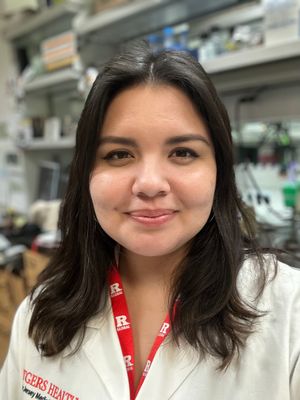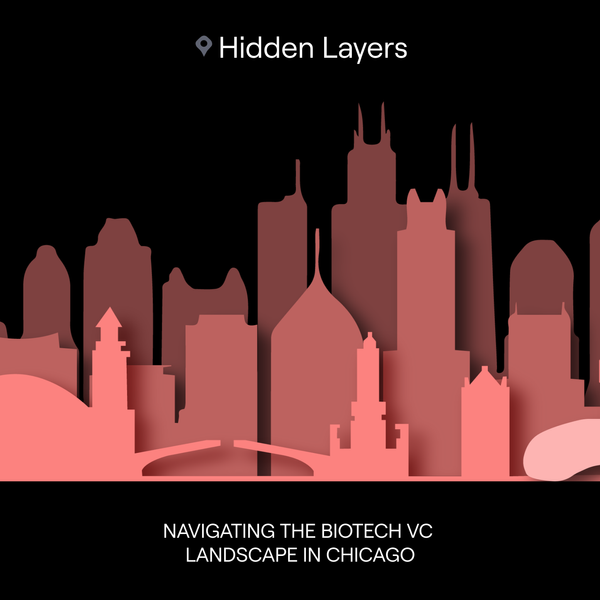In vitro gametogenesis (IVG) is a rapidly developing field in the biotech world. Though it is taking both the public and science world by storm, IVG is still surrounded by a cloud of questions involving industrial, regulatory, and ethical approaches. IVG is a technology that could enable two people of any sex to reproduce together by converting somatic cells into sperm or eggs. This could offer hope to couples suffering from infertility as well as same-sex couples who want to have a child together. However, there are broad implications for the use of this technology and its impact on society. Therefore, the need for regulation must be considered to prevent misuse and address ethical concerns, including “designer” babies or further entrenching social inequality. In this article, we highlight what the current goals and challenges are for IVG and the leaders in this research field.
Assisted reproductive technology (ART) primarily addresses infertility through in vitro fertilization (IVF) approaches. While IVF is still widely used, it comes with disadvantages, including its invasiveness and inability to address male infertility. A new advancement of ART, IVG, may be the first approach to circumvent these issues. IVG is the process of forming germ cells from induced pluripotent stem cells (iPSCs), which are multi-purpose and fundamental building blocks for the human body and a priceless tool for multiple fields of research. By modulation of specific transcription factors, somatic cells can be induced into an embryonic-like state and coaxed to differentiate into theoretically any cell type. Some cells are easier to manipulate than others, and differentiating iPSCs into viable sperm and egg cells poses unique challenges. In 2012, IVG was successfully implemented in murine models to produce viable embryos and healthy mice offspring using mouse tail cells as the somatic cell starting material. At Kyoto University, Mitinori Saitou, Ph.D. has become well known for his germ cell research and has been featured multiple times on NPR and the New Yorker. By 2018, his group moved away from mice by reprogramming human blood cells into iPSCs and coaxing them into primitive human egg cells that closely resemble human oogonia. Equivalent preliminary work has resulted in primitive human sperm cells. Excitingly, the groundwork is there for researchers to create in vitro human embryos in the possible near future.
The benefits of developing IVG technology for human use continue to motivate the scientists who work in this field in several ways: (a) Utilizing any cell in the human body for the production of embryos would allow same-sex couples to have children that share both parents' genetic material, instead of one or neither parent through surrogacy, adoption, IVF, etc.; (b) Couples could have genetically related children even if one or two of the partners are not fertile or have low fertility. This would replace current ART and non-ART methods (e.g., insemination); (c) With IVG, women, in particular, would have more flexibility to explore and establish their career and finances before having children and not have to worry about their age increasing certain risks with pregnancy. The impact this technology could have on improving current approaches to family planning and development is incontrovertible.
The use of CRISPR technology in combination with IVG has brought about controversial debates that cause some to cringe or imagine the movie Gattaca. From a medical care perspective, this technology can advance human health and improve the quality of life otherwise diminished by underlying genetic disorders or mitigate disease susceptibility. The logistical and ethical concerns are part of what keeps people from discussing the proper implementation of IVG in human healthcare.
"From a medical care perspective, this technology can advance human health and improve the quality of life..."
While IVG is a rapidly expanding field, there are currently only a few major players each tackling different aspects of fertility and women’s health. In 2020 the biotech startup Gameto, established by co-founders Martin Varsavsky and Dina Radenkovic, devised a three-pronged approach to tackling women’s health with fertility treatments at the forefront of their company’s mission. The company Gameto itself is subcategorized into 3 sects based on different stages of female reproductive health and medical approaches: Fertilo, Deovo, and Ameno. Fertilo is the lead section of Gameto that focuses on assisting maturation of eggs harvested during the initial step of in vitro fertilization. Using proprietary engineering of iPSCs incubated with oocytes from patients, an ex vivo ovarian environment can be established to facilitate the maturation of harvested immature eggs. Meanwhile other developing branches of Gameto namely Deovo and Ameno are focusing on utilizing similar technologies to diagnose or evaluate ovarian health in vitro and prolong the onset of menopause.
"Founded by CEO Ivana Vasic in 2021, Vitra Labs is focused on developing in vitro approaches to generate gamete cells from pluripotent stem cells."
Another player in the IVG space is Vitra Labs, a winner of the 2022 Nucleate Activator Program. Founded by CEO Ivana Vasic in 2021, Vitra Labs is focused on developing in vitro approaches to generate gamete cells from pluripotent stem cells. Specifically, they are targeting the expression of bone morphogenetic protein 4 (BMP4) via deletion of tight junction protein 1 to trigger the transition of pluripotent stem cells into primordial germ cell-like cells. These cells are considered precursors to egg and sperm cells that can potentially be used in a wide variety of therapeutic applications. While the mechanism of how these cells respond to BMP4 remains unclear, it’s exciting to see how Vitra Labs will expand its research to elucidate this novel biotechnological discovery.
Like Vitra Labs, Conception Biosciences, a biotech company headquartered in Berkeley, seeks to make IVG a reality. Founded by Matt Krisiloff, Pablo Hurtado Gonzalez, and Bianka Seres in 2018, Conception is also developing an iPSC-based technology to convert stem cells into mature eggs outside the body. What makes them unique is their use of organoids, which replicate the germ cell development process to produce these egg cells. Egg production could be as simple as a donor providing a blood sample. While this technology is promising, a key step in oogenesis, developing a primary follicle, has still not been achieved. Yet proponents of IVG are hopeful that soon, the dream will become a reality.
The potential misuse of IVG technology sometimes keeps people up at night. With the abnormal flexibility of starting material for IVG, one can ask where the line should be drawn. Genetic material can be taken from a person without consent or from a person who has already passed away. Consent can be given, but how do we define consent? Combining IVG and CRISPR technologies could result in users manipulating phenotypic traits (e.g. fitness, skin tone, eye color, etc.) for societal gain. Will we further exacerbate systemic barriers to technology access or increase socioeconomic divides? As different countries adopt this technology, will everyone have the same regulations for reproduction through this method?
Regulation is the main topic on the horizon in the IVG biotech space. Specifically, can we use regulatory practices to reap the benefits of IVG while minimizing negative impacts, and if so, how is that accomplished? Some existing regulations need to first be considered. For example, the US Congress prohibits work associated with genetically altered human embryos. Additionally, human embryological studies are legally restricted to embryos less than 14 days old and there is a lack of biological safety data on the matter. In an NPR interview, Dr. Peter Marks, director of the Center for Biologics Evaluation and Research at the Federal Drug Administration (FDA), stated that the FDA is “exploring the implication of IVG”, but is still wary of how to legally tread ethical concerns. “This creeps out our attorneys[...] it makes them feel uncomfortable in this space”, Marks stated for NPR.
From a regulatory standpoint, IVG will be the next frontier in ART and likely face similarly limited regulation for all parties involved (i.e., donor, patient, and service provider). The first infant born via in vitro fertilization in the United States was in 1981. Since that time ART regulation has still been relatively absent in the US. As noted in a Washington Post article, there is no limit on the number of times a donor’s eggs or sperm can be used, no genetics testing requirement for fertilized embryos, and no limit on the number of fertilized eggs that can be transferred in a patient at one time. Yet, many of these aspects of ART are heavily regulated in other countries including Canada, Germany, and the UK. In the US services and technologies are regulated differently. Right now, ART is generally considered a service more than a technology. Classification of IVG as either a service and/or a technology will necessitate different regulations.
"From a regulatory standpoint, IVG will be the next frontier in ART and likely face similarly limited regulation for all parties involved (i.e., donor, patient, and service provider)."
In contrast to these noted concerns the American Society for Reproductive Medicine (ASRM) claims the idea of little to no regulation in the US is largely misleading. ASRM cites federal regulation that comes from the Centers for Disease Control (CDC), FDA, and Center for Medicaid and Medicare Services (CMS). States are largely self-regulated and have different mandates based on medical licensing boards or state agency standards. Furthermore, ASRM states that it has a practice committee that “issues regular reports, including guidelines on minimal standards for providing ART, informed consent, and on the number of embryos to be transferred in IVF procedures.” ASRM also claims that the Society for Assisted Reproductive Technology (SART) is an affiliate of ASRM with its membership accounting for ~90% of practicing American fertility clinics. Notably, ASRM has called for a change in insurance coverage policies, as insurance companies often don’t cover ART as a part of general medical health plans. ASRM cited a research article from the New England Journal of Medicine that examined how requiring insurers to provide coverage for IVF affected the outcome of IVF treatments. The findings concluded that states without IVF included in insurance coverage have a greater number of embryos transferred per IVF cycle and a greater number of high-order multiple births. Overall, while there are broad-stroke regulations on a federal level, there is an inconsistent patchwork of regulation for ART at the state level that has real consequences for individuals and communities. This supports that there is difficulty in regulating this technology which will also affect IVG in the future.
The future of assisted reproductive technology will forever be changed in the US if and when we add IVG to the toolbox. Companies like Gameto, Vitra Labs, and Conception Biosciences are all working to perfect IVF, IVG, and other reproductive technologies. These advancements afford opportunities for those struggling to conceive or needing alternative means of conception. As we aim to perfect IVG with human cells and offer this technology to more people, we must keep in mind the need to develop or amend existing regulations to reap the full benefits. It will be important for scientists, regulators, and patients alike to keep abreast of the advancements in IVG, its place in the ART toolbox, and its regulation as a service and/or technology.












